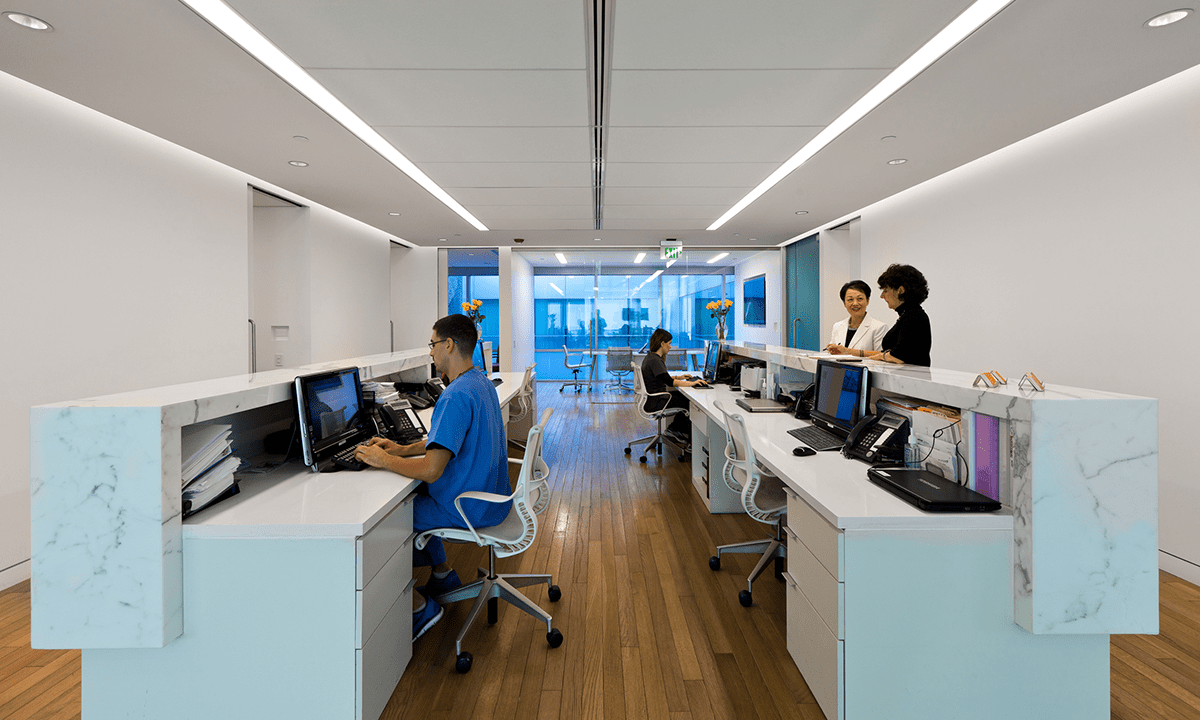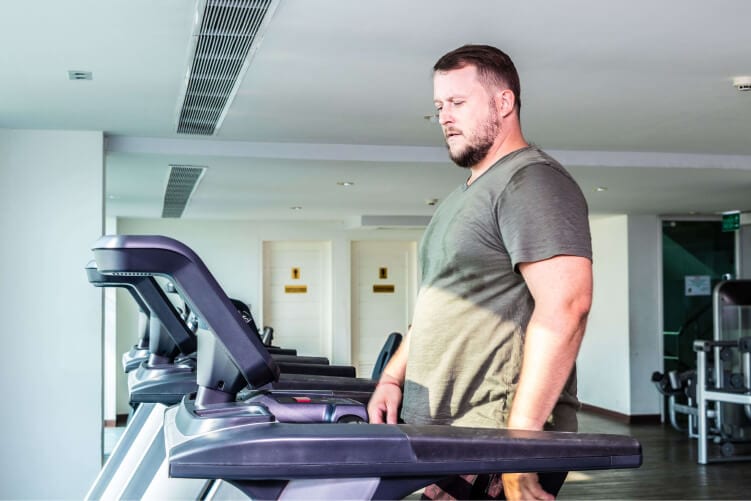
What is Robotic Surgery?
Robotic surgery is the use of robotic platforms in surgical procedures. The robotic surgical system was developed to fill in the gaps left by pre-existing minimally invasive surgery. Robotic surgery can result in fewer complications than traditional surgical procedures. Patients undergoing robotic surgery can also experience less blood loss than those undergoing open surgeries.
Other benefits of robotic surgery include less pain and a shorter hospital stay. Patients undergoing robotic surgery will also have less scarring and will experience faster recovery than those undergoing more invasive procedures(1).

Robotic Surgery Specialties at the Khalili Center
The Khalili Center uses a da Vinci surgical system, specifically the da Vinci Si surgical system, in performing robotic surgeries. The system has three robotic arms; one with a camera and two with various surgical instruments attached to them.
Built by Intuitive Surgical, the da Vinci system is the first robotic surgery system approved by the U.S. Food and Drug Administration (FDA) for complex procedures, like general laparoscopy.
Some of more advanced surgery centers in California that use the Da Vinci robotic system include the University of California, Los Angeles (UCLA), Hollywood Presbyterian Medical Center, Huntington Hospital, and Children’s Hospital Los Angeles.
It is documented that patients undergoing da Vinci robotic surgeries can experience fewer complications than patients who had open surgeries and traditional laparoscopic surgeries(2). The da Vinci robot has been used to assist over 6 million surgeries(3).
The da Vinci Si single-site system used at the Khalili Center uses state-of-the art robotic and computer technologies. As a patient lies on a table, two interactive robotic arms, with high-performance miniature instruments attached to them, help the doctor perform the surgical procedure.
Colorectal Surgery
The Khalili Center also specializes in robotic colorectal surgery. Colorectal surgery is the operation of the rectum, anus, and colon to treat various health complications. Surgeons prescribe the surgery for patients diagnosed with colon cancer, rectal cancer, colon polyps, and bowel disease(4).
General Surgery
The use of robotic systems is also applicable in general surgeries, like thoracic surgery, splenectomy, and gastrectomy. Robotic cholecystectomy is a laparoscopic surgery that removes the gallbladder using robotic surgery systems. The system translates the movement of the human hand, wrist, and fingers into real-time movements of the surgical tools inserted in the body.
Hernia repair surgery can also be performed using robotic systems. During a robotic hernia repair surgery, the surgeon uses laparoscopic tools to view the inside of the body. Robotic surgery specialists will repair the weakness in the abdominal wall through small incisions in the abdomen.
Gynecology/Urogynecology
Gynecologic surgery is surgery on a woman’s reproductive system, including the ovaries, cervix, vagina, cervix, uterus, and fallopian tubes. The surgery is usually performed for gynecologic oncology. It can be used to treat heavy and irregular menstrual periods, pelvic pain, and ovarian cysts(5).
Hysterectomy is the surgical procedure to remove the uterus. During a robotic hysterectomy, the surgeon will make five small cuts in your abdomen where the surgical tools will be inserted. The surgeon detaches the uterus from the surrounding tissues through the smaller incisions. After the laparoscopic hysterectomy, you can leave the hospital the same day or you can stay overnight.
Robotic myomectomy is the removal of uterine fibroids using robotic technology. Surgeons remove the fibroids robotically for greater precision.Compared to patients undergoing traditional myomectomy, patients undergoing robotic myomectomy can experience less risk of infection, less blood, a shorter hospital stay, and quicker recovery.
Urology
Urology is a branch of medicine that focuses on the male and female urinary tract system and the male reproductive organs.
Prostatectomy is the surgical removal of all of or a part of the prostate. During a robotic prostatectomy, the surgeon uses a surgical robot to remove the prostate through small incisions. Surgeons perform urologic surgery to treat prostate cancer.
Robotic partial nephrectomy is the removal of a part of a kidney using robotic systems. Surgeons operate to remove cancerous tissue while preserving as much healthy kidney tissue as possible. The procedure is for patients with a tumor in the kidney less than 4 centimeters in size.
Choose The Best Robotic Surgeons in Los Angeles
Dr. Theodore Khalili, MD, FACS and Dr. Gregg Kai Nishi are two of the best robotic surgery specialists in Los Angeles.
Dr. Khalili is the founder and the leader of the Khalili Center. He also established the Weight Loss Surgery of Southern California. A pioneer in his field, Khalili performed the country’s first robot-assisted surgery in 2002. Khalili has shared his medical insights in various news outlets, including Good Morning America and the Los Angeles Times.
Dr. Gregg Kai Nishi is the director of the Institute for Minimally Invasive and Robotic Surgery at K and B Surgical Center. He was named “Top Bariatrician in the Nation” for 2013 by HealthTap. Dr. Nishi has also trained several other bariatric surgeons who have gone on to create and lead bariatric programs all over the United States.
Read more about our doctors and their surgical techniques here and find out how they can help you through robotic surgery.
How to Know if Robotic Surgery Is for You
After a complete physical exam and review of your symptoms and medical records, your physician may suggest robotic surgery for treatment.
Robotic surgeries are usually prescribed to patients with the following medical conditions:
- Bladder, kidney, or prostate cancer
- Benign prostatic hyperplasia
- Pelvic organ prolapse
- Peyronie’s disease
- Varicocele
- Kidney stones or gallstones
- Cysts
- Other kidney or bladder issues
Before, During, and After the Surgery
Preparations for robotic surgery vary depending on the procedure you will have. After you fill out the patient intake form, robotic surgery surgeons will require you to avoid eating and to clean your bowels with a laxative or enema.
In the operating room, you will receive anesthesia and antibiotics to prevent infection. The surgeon will make tiny incisions at the surgical site where they will insert surgical tools. The surgeon can either repair or remove tissues and other organs through the small incisions. The incisions will be closed after the robotic procedure. Recovery time varies depending on the robotic surgery and your current medical condition. You are expected to recover faster compared to other patients who have open surgeries.
Risks of Robotic Surgery
Like any surgical procedure, a robotic surgery may have risks, such as:
- Risk of infection
- Possible bleeding
- Cardiopulmonary risk of anesthesia
- Risk of mechanical failure(6)
The Khalili Center’s Robotic Surgery Q & A
Will my insurance cover robotic surgery?
At the Khalili Center, we offer free consults and insurance verification. You can also contact your insurance group for more information about your insurance plan.
How can I book an appointment with Khalili Center?
You can book an appointment by calling or by visiting us at 9033 Wilshire Blvd. #200 Beverly Hills, California. However, due to travel restrictions caused by the COVID-19 pandemic, a visit to the center can be difficult.
If you can’t visit the center, you can pay a virtual visit online on our website instead. Additional information about robotic surgery is available online.
How can I get additional information about the Khalili Center?
You can call 310-858-1242 to book any type of appointment and make appointment requests and feedback requests. You may also call for general inquiries and additional information about the Khalili Center.
You can also join a free new patient seminar by filling out a form on our website, www.khalilicenter.com. You have to provide your name, email, and mobile phone number to complete registration.
References
- MedStar Franklin Square Medical Center. Minimally Invasive or Laparoscopic: Benefits of Robotic Surgery. Retrieved from https://www.medstarfranklinsquare.org/our-services/surgical-services/treatments/robotic-surgery/benefits-of-robotic-surgery/
- Da Vinci Surgery. Retrieved from https://www.davincisurgery.com/
- Ibid
- Mayo Clinic. Colon and Rectal Surgery. Retrieved from https://www.mayoclinic.org/departments-centers/colon-rectal-surgery/sections/overview/ovc-20312718
- Mayo Clinic. Obstetrics and Gynecology. Retrieved from https://www.mayoclinic.org/departments-centers/minimally-invasive-gynecologic-surgery/overview/ovc-20424071
- Patient Safety Network. Robotic Surgery: Risks vs. Rewards. Retrieved from https://psnet.ahrq.gov/web-mm/robotic-surgery-risks-vs-rewards
Your Journey to Overcoming Obesity Starts Here.
Weight loss surgery is a tool to reset your life.
Our comprehensive program is everything you need to set you up for your new life and to keep the weight off. All you have to to find out if we’re right for you is to book an appointment.



